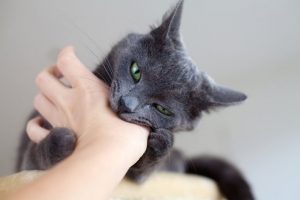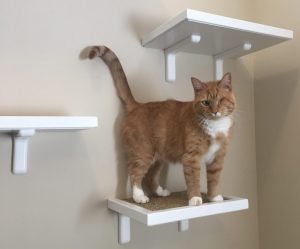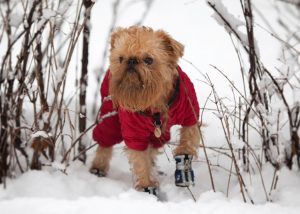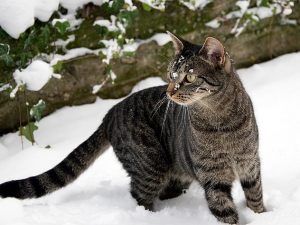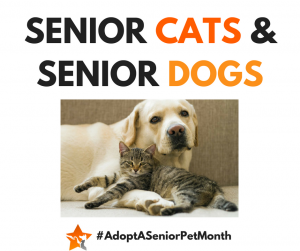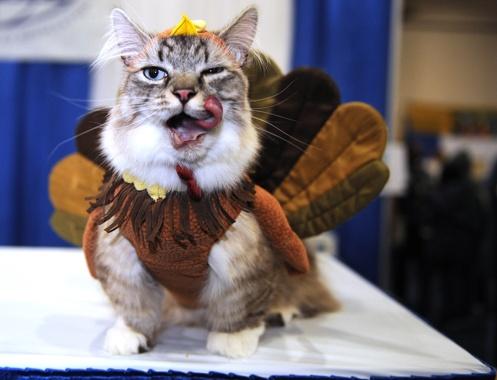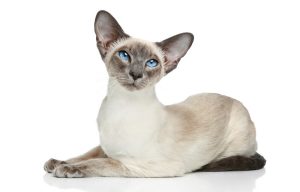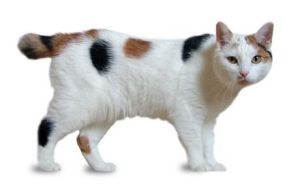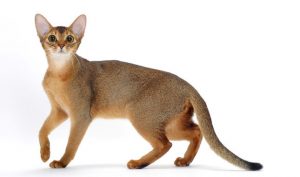
With the holidays approaching, it’s time to think not only about celebrating, but also about dog safety.
To ensure that the season stays merry and bright, plan ahead and start early. Change the appearance of your home from everyday to holiday gradually, over a period of several weeks. This will allow your dog time to grow comfortable with everything from new or additional furniture and tabletop arrangements to wall and window decorations. To encourage your dog to view this as something positive, reinforce the sentiment by keeping him occupied with Kongs filled with cheese spread or peanut butter, or puzzle toys to puzzle over while you slowly transform the space around him. Maintain your dog’s normal feeding and walking schedules. Ensure that your dog’s “go to” place for security remains the same, unless you know from past experience that his doggy bed, crate or favorite blanket should be moved to a room far from the festivities.
Whether you’re hosting a single event or several, follow the same routine to minimize your dog’s potential uneasiness. Ask any unfamiliar guests and all of the children to calmly ignore your dog. Monitor your dog for any signs of anxiety or stress, and lead him to his “safe” place if necessary. On the other hand, if he appears relaxed and is eagerly going from guest to guest, provide them with some of his favorite treats so that they can keep him happily fed.
Be conscious of and careful about the greenery you bring into your home. The sap of the Poinsettia plant is considered mildly toxic, and can cause nausea or vomiting in your dog. Holly is considered moderately toxic and can cause nausea, vomiting and diarrhea, whereas mistletoe is severely toxic and can cause everything from gastrointestinal disorders to cardiovascular problems. Christmas trees are considered mildly toxic. Their oils can irritate your dog’s mouth and stomach, causing excessive drooling and/or vomiting, while their prickly needles are hazardous to your dog’s entire GI tract. Wherever possible, keep all plants beyond your dog’s reach, or else watch him carefully for signs of curiosity, interest, or the impulse to either lick or chew. To err on the side of caution, buy artificial plants instead.
Consider next the breakable ornaments and dangling tinsel, shiny ribbons, ropes of small lights and flickering candles. All eye-catching eye candy to curious canines – from noses and teeth to paws and tails.
Hang delicate ornaments higher on the tree and resist placing any in decorative bowls on low surfaces. Not only can dogs choke on them, but the sharp edges of any broken pieces can lacerate their mouths, throats and intestines. Drape tinsel higher on the tree as well, and keep ribbons on gifts underneath the tree to a minimum. If tinsel or ribbons are swallowed, they can twist and bunch inside a dog’s intestines, causing serious, sometimes fatal, damage if not caught quickly enough.
Artificial snow is toxic and should be avoided at all costs. Lights, large and small, solid and flickering are another danger, not only because they are hot and breakable, but because of the electrical cords holding them together. If bitten, they can cause electrical shock if not properly grounded, and if frayed, they can cause severe lacerations to your dog’s tongue.
Place all lighted candles out of reach to reduce the risk of singed fur and pads, paws and tails, and lower the chance of them being tipped over, leaving burning wax everywhere or worse, starting a fire.
As appetizing as holiday fare is for people, it can prove agonizing, even lethal for pets. The most notorious offenders are:
Grapes: Although the precise substance which causes the toxicity in grapes is unknown (some dogs can eat grapes without incident, while others can eat one and become seriously ill), keep them away from your dog.
Onions and garlic: The sulfoxides and disulfides in both destroy red blood cells and can cause serious blood problems, including anemia.
Ham: High in salt and fat, it can lead to stomach upsets and, over time, pancreatitis.
Macademia nuts: Within 12 hours of ingesting them, dogs can experience weakness, depression, tremors, vomiting and hyperthermia (increased body temperature), lasting between 12 and 48 hours. If your dog is exhibiting any of these symptoms, contact your vet immediately.
Bones: Whether rib roasts or lamb chops, turkey, chicken or duck, they all have bones. Thick ones and thin ones. Brittle, fragmented and splintered ones. Whatever the size, shape or texture, they all spell the same thing: danger. From throat scratches to stomach perforations to bowel obstructions. To safeguard against these painful possibilities, all leftovers, particularly bones, should be carefully wrapped and promptly disposed of.
Fat trimmings: They cause upset stomachs, vomiting, and diarrhea.
Alcohol: It’s traditional to celebrate the holidays with more alcohol than usual – in cooking and in drinks such as eggnog and fruit punch. For safety’s sake, keep these temptations (including partially eaten plates of food and half-empty glasses) out of reach of your dog to avoid intoxication and alcohol poisoning.
Chocolates: Although chocolate has long been taboo for dogs, most chocolates are wrapped in foil for the holidays. Now, not only can your dog get sick from eating the chocolate, the wrappers themselves can get stuck in his throat or cause problems as they work their way through his digestive tract.
Christmas pudding, cake and mince pie: Filled with potentially toxic raisins, currants, and sultanas, they are also made with fat and suet, and laced with alcohol — from scotch and brandy to sugary liqueurs.
And so, with some strategic planning beforehand, you and your doggy dearest can be assured of spending the happiest and safest of holidays together.
Article by Nomi Berger
